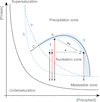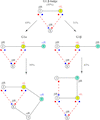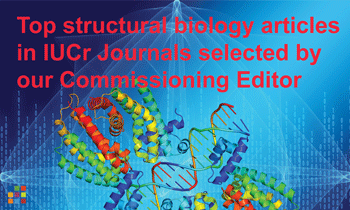issue contents
February 2021 issue

Cover illustration: Schematic overlay of the crystallization phase diagrams for three model enzymes used in a study of homogeneous batch micro-crystallization of proteins from ammonium sulfate [Stohrer et al. (2021), Acta Cryst. D77, 194-204]. The precipitating properties of ammonium sulfate have been exploited to quickly transition from known vapour-diffusion conditions to reproducible, large-scale batch crystallization, circumventing the tedious determination of phase diagrams. Ammonium sulfate is a common precipitant in protein crystallography, making these findings applicable to many crystallization systems to facilitate the production of large amounts of microcrystals for serial macromolecular crystallography experiments. (Book image from https://www.freeimages.co.uk.)
CCP4
 access
access access
accessCCP-EM
 access
accessresearch papers
 access
access access
access access
access access
access access
access access
access

 journal menu
journal menu































